How To Dog-Proof Your Christmas Tree
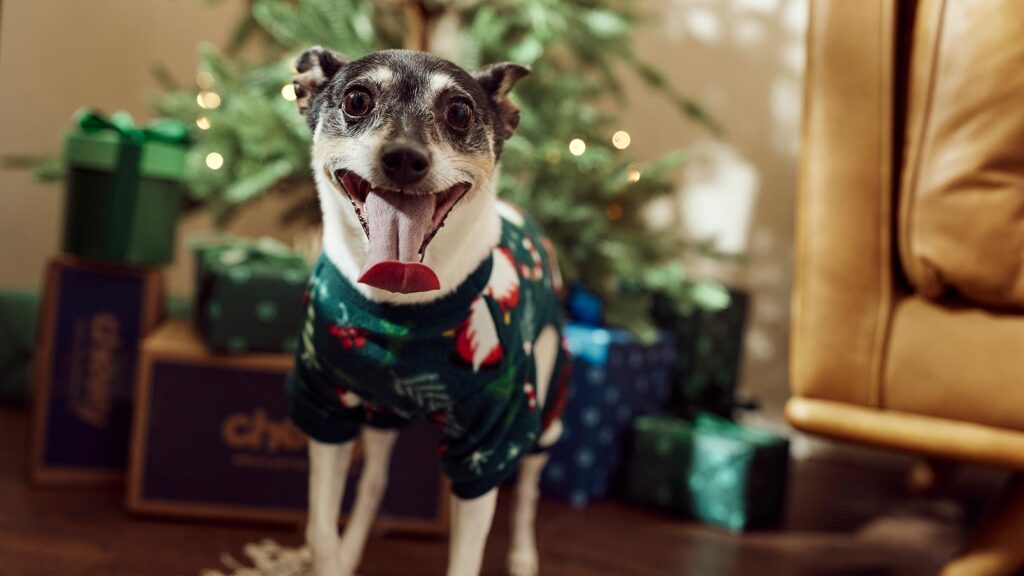
Photo by Chewy
Trimming the tree is one of those essential holiday traditions that makes the holiday season special. Unfortunately, dogs and Christmas trees are not always the best—or safest—combination.
“Depending on the size of the tree and the weight of a dog, a tree can get knocked over on the dog,” says Arden Moore, founder of The Pet Health and Safety Coach in Dallas, Texas. “There could be a limb injury, sprain, or a fracture. If you have a little Shih Tzu and an 8-foot tree, who’s going to win?”
Add breakable ornaments, gifts, and even tree water that can pose a risk to dogs, and you’ve got a dangerous situation on your hands. So, how do you dog-proof a Christmas tree?
Keep the magic in Christmas by using dog-friendly decorations (those fragile ornaments must go!), physical barriers, and training cues to keep your furry best friend away from the tree.
Key Takeaways
- Dogs and Christmas trees can be a risky mix, but proper precautions can keep both safe.
- Artificial trees and tree barriers help minimize safety risks.
- Training your dog and using dog-friendly decorations help ensure holiday safety.
- Avoid placing gifts under the tree until Christmas morning to reduce temptation and risk.
How To Dog-Proof Your Christmas Tree
Follow these tips to protect your Christmas tree from dogs.
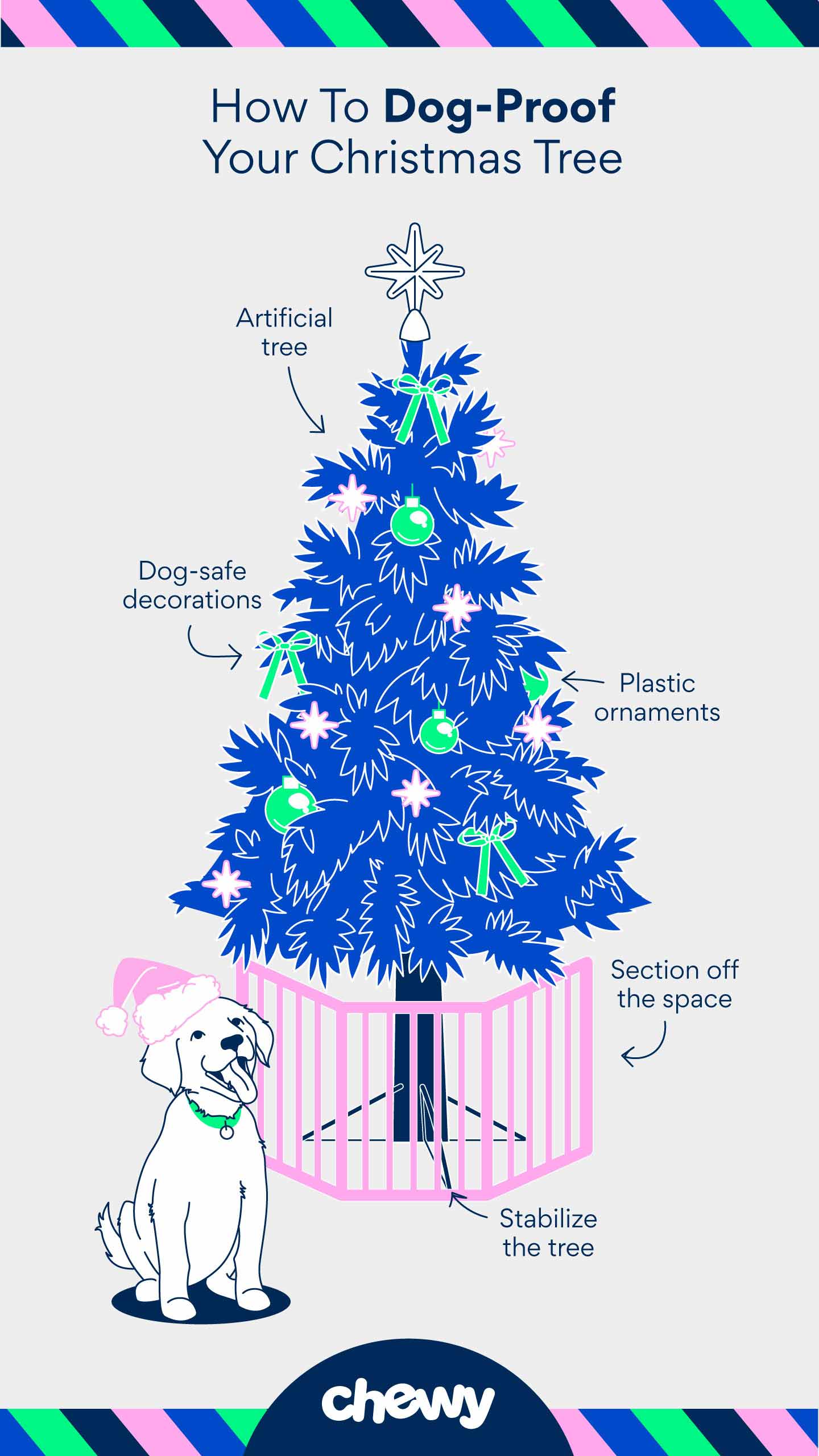
Photo by Chewy
Consider an Artificial Tree
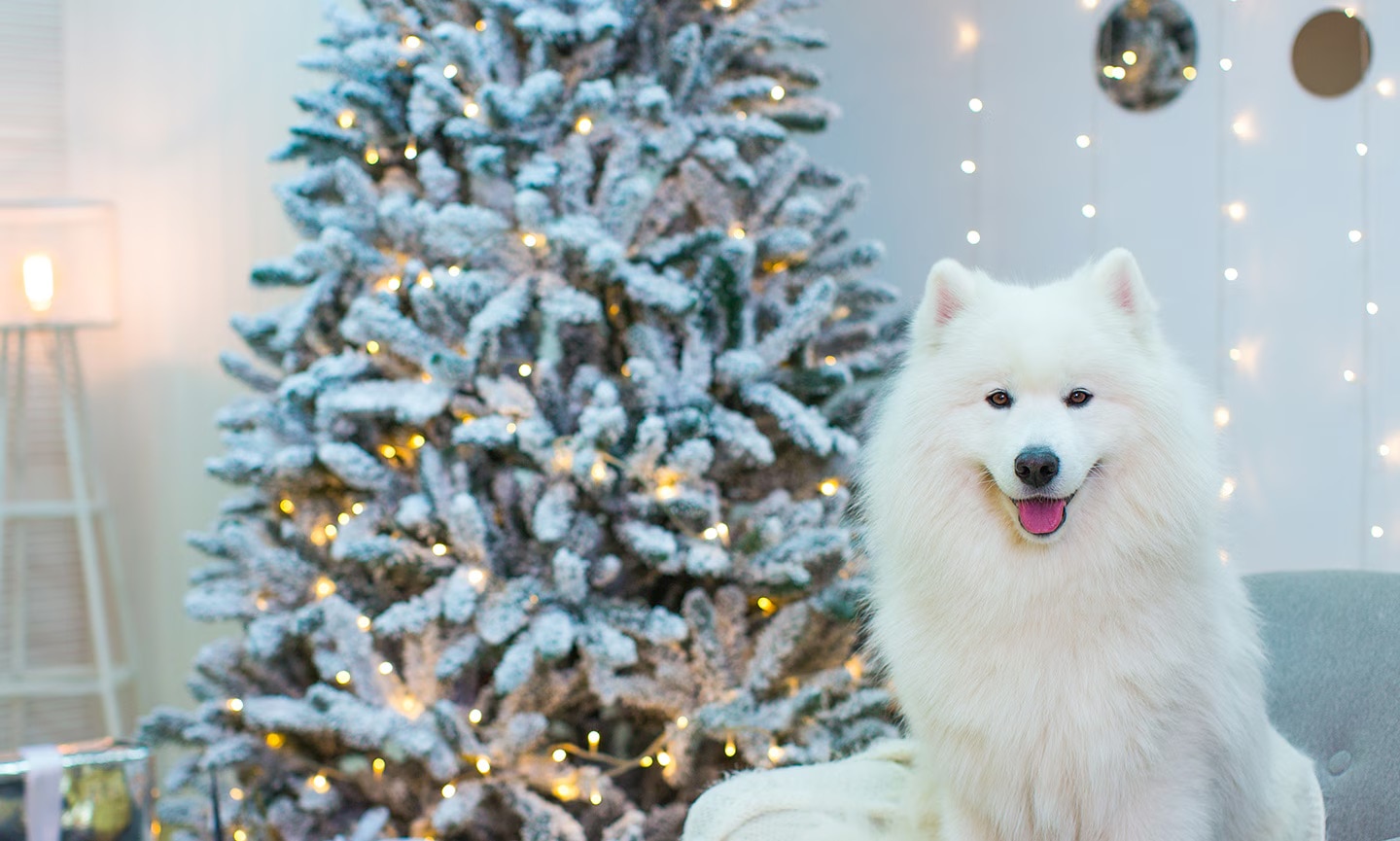
Photo by Svetlana Belkina/iStock/Getty Images Plus via Getty Images
Real Christmas trees pose a danger to pets due to their pine needles, which can cause GI upset if ingested by your pet, and tree water, which may contain chemicals that are unsafe to drink. Instead, consider an artificial Christmas tree.
“An artificial tree is safer because they’re not going to drop needles, and they don’t need the water in the base,” says Dr. Jason Nicholas, BVetMed (Hons), a veterinary consultant and former ER vet.
If you do opt for a live tree, be sure to keep it well-watered to prevent the needles from falling off the tree—but skip the additives, Dr. Nicholas advises. A decorative Christmas tree stand cover can block access to the water completely and add some style to your setup.
Stabilize the Tree
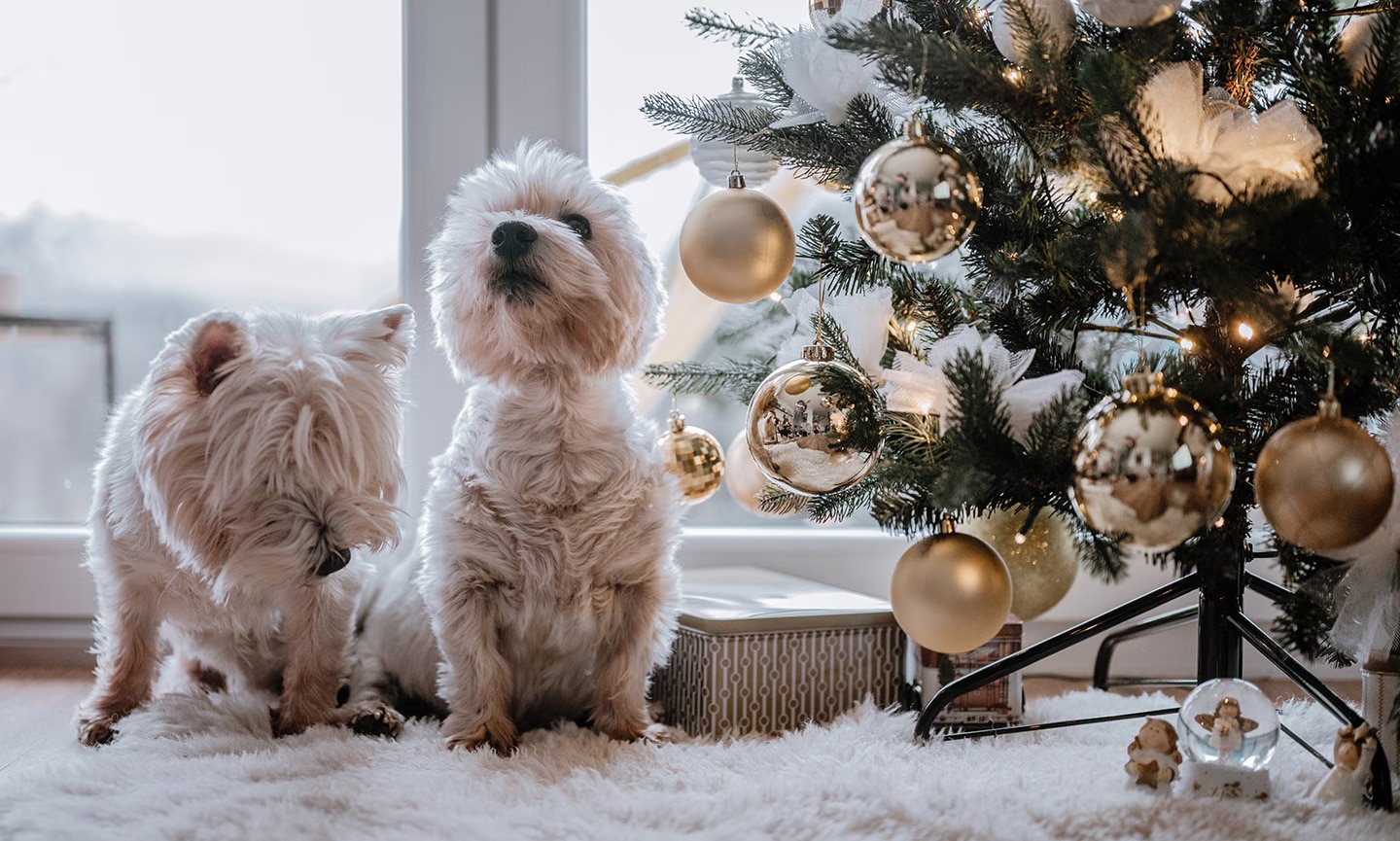
Photo by Pyrosky/E+ via Getty Images
No matter what type of tree you choose, make sure it is stable so your dog can’t accidentally knock it (and all its lights and baubles) over.
“You want to make sure you have a really sturdy tree base, so it isn’t leaning,” Dr. Nicholas says.
You can further secure the tree by using an eye hook and twine to anchor it to the wall or ceiling.
Use a Fence or Gate To Protect the Tree

Photo by Chewy Studios
How do you keep your dog away from the Christmas tree? Consider these options:
- Use a free-standing dog fence or gate to prevent access to the tree. Moore recommends using a Christmas tree fence for dogs with vertical slats, rather than horizontal, so your dog can’t climb over it like a ladder.
- Close off the entire room with a pet gate or by keeping the door closed (if available).
Recommended Products
Train Your Dog to Stay Away from the Tree
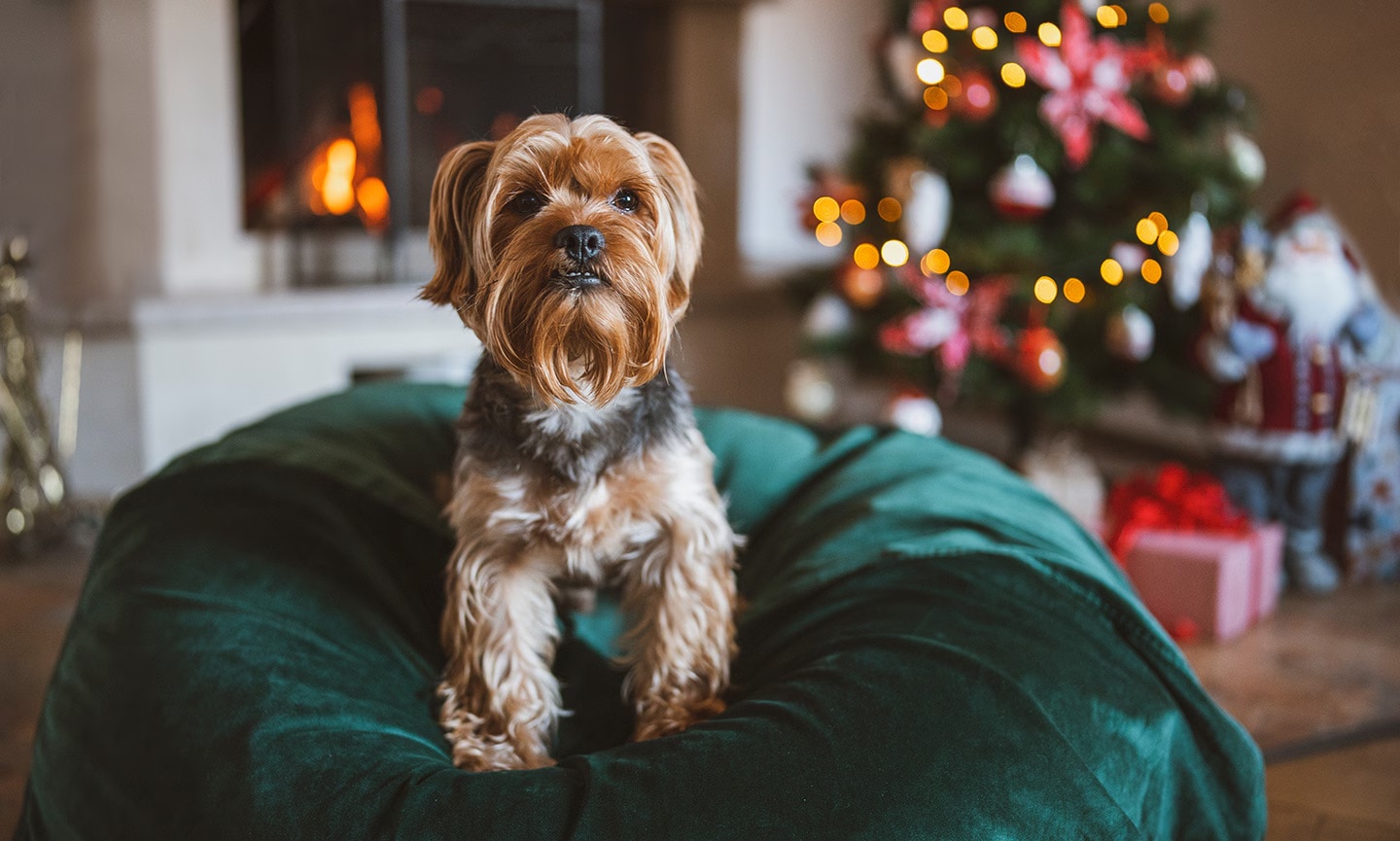
Photo by ArtistGNDphotography/E+ via Getty Images
Teach a place cue, recommends Francine Coughlin, CPDT-KA, IAABC, dog trainer, behavior consultant, and founder of Bark N Roll canine care center in Reading, Massachusetts.
The place cue tells dogs to go to a certain spot or mat when asked, even with the distraction of a “giant blinking tree in your living room,” she says.
Coughlin also allows the dogs to initially “check it out” and sniff the tree. Allowing them to satisfy their initial curiosity may lead to less interest in the tree throughout the holidays.
“I don’t want to punish them for being exploratory, but I want to call them away before they try to jump at the tree or tear apart the gifts,” she says.
Use Dog-Safe Tree Decorations
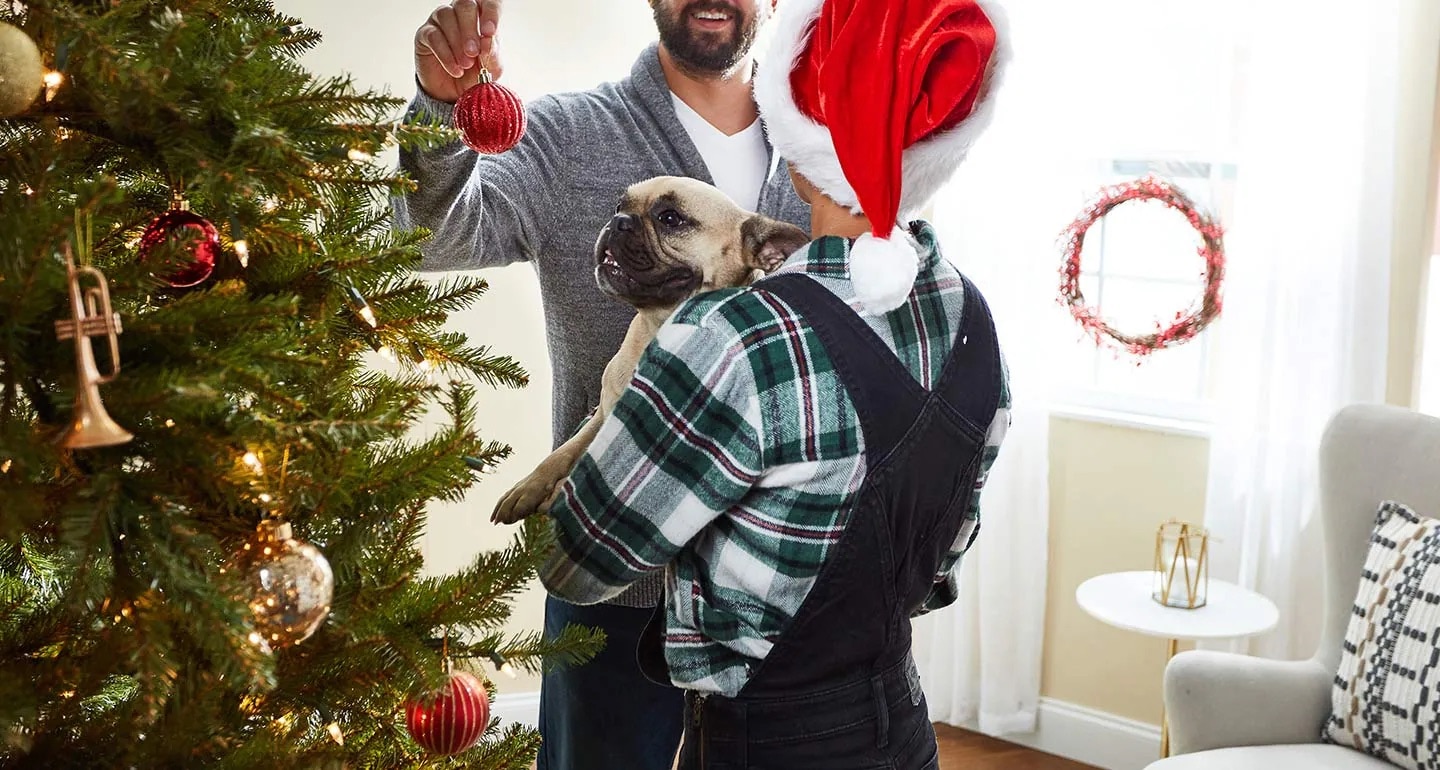
Photo by Chewy Studios
So, what are the best decorations for a dog-proof Christmas tree? The answer can vary, depending on each individual dog.
Potentially dangerous decorations include seasonal flowers and plants, like poinsettias and mistletoe; low-hanging fragile ornaments; and candles.
Christmas lights can cause a host of issues too, including fires and strangulation. Coughlin suggests coating them with petroleum jelly or a pet deterrent spray to discourage chewers.
Here are some common Christmas tree decorations to avoid and safer alternatives recommended by our experts:
Decorations to Avoid
- Anything edible, especially chocolate or candy (like candy canes) that contain the sugar substitute xylitol—both of which are toxic to dogs.
- Glass
- Bells
- Metal hooks
- Strings of popcorn (the string, if swallowed, can cause severe intestine issues)
- Salt dough ornaments (which can cause salt poisoning in dogs)
- Tinsel
- Garlands
Safer Options
- Plush or safe DIY ornaments
- Plastic ornaments
- Plastic hooks
- Twist ties (for hanging ornaments)
- Christmas cards
Decorate the Top Half of the Tree
If you can’t live without the sparkle of glass or ceramic ornaments, you may not have to give them up entirely—just move them up!
According to Moore, breakable decorations should always go on the upper half of your tree, well out of reach of curious paws and wagging tails.
Save the bottom branches for safer items like soft plush ornaments and shatterproof balls.
Cover Electric Cords
To help prevent chewing and tugging on electrical cords, hide them with a sturdy tree skirt or cord covers.
A covered cord is a safer cord—and it means fewer temptations for your four-legged holiday “helper.” Bonus: it also makes your tree setup look a lot tidier.
Recommended Product
Be sure to check for exposed wires or fraying as well, and unplug lights when you’re not around.
Delay Placing Gifts Around the Christmas Tree
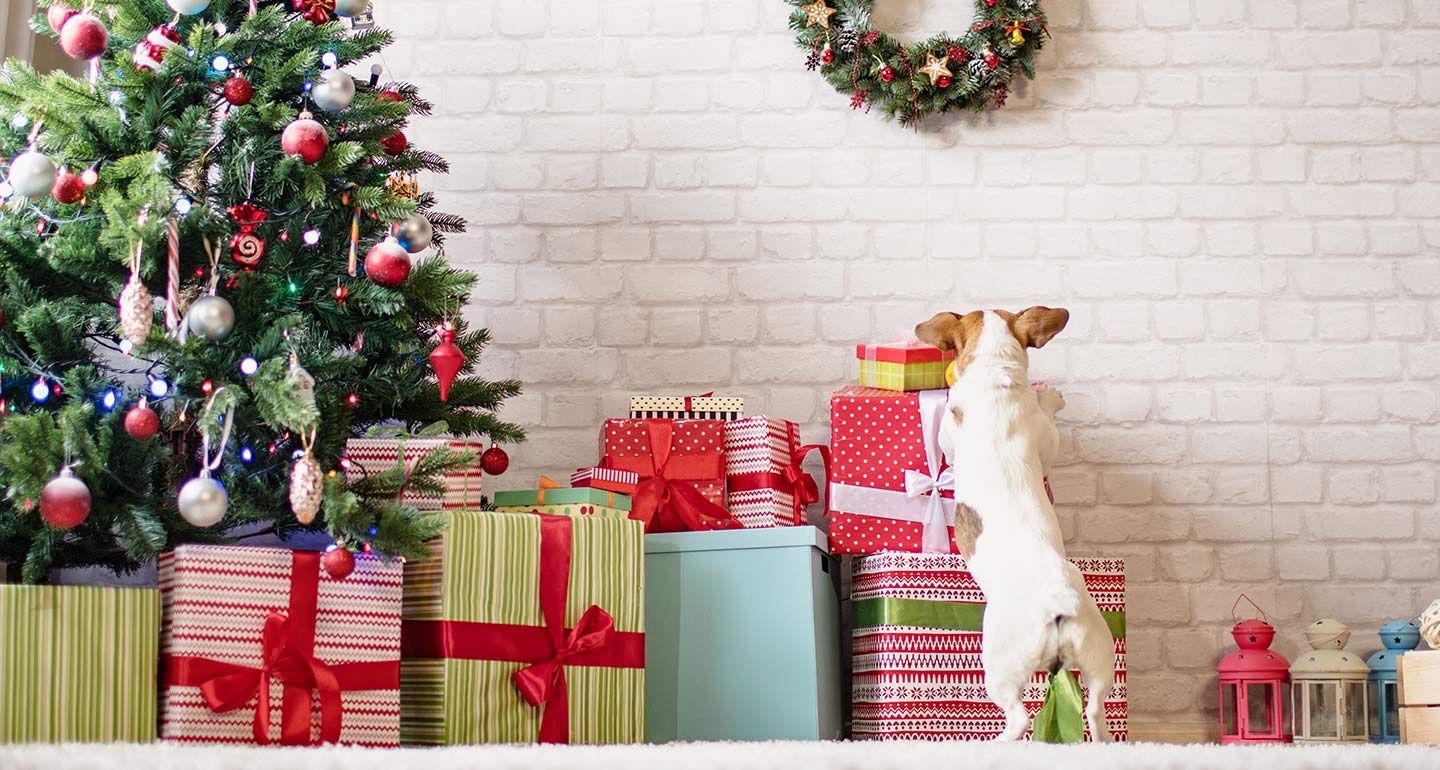
Photo by iStock.com/AnatolyTiplyashin
Experts agree: Don’t set the gifts out until the last minute.
“I don’t put any presents under the tree until Christmas Eve or Christmas morning—that’s just way too tempting for my crew,” says Coughlin, who shares her home with several dogs. “I keep them completely out of reach.”
Keeping gifts hidden (either up high and out of reach or in a room your dog does not have access to) will save not only the presents but potentially also your pet’s life.
“Dogs can out-smell us,” says Arden. “So, if your aunt left you a fruit cake or there’s a box of chocolate that you don’t know about, your dog knows it’s there.”
Don’t forget cleanup, too. The remains of the unwrapping frenzy, including ribbons, ties, and wrapped treats, could wind up as a blockage or other intestinal disaster if your dog eats them.
The Bottom Line
Taking preventative steps to create a dog-proof Christmas tree might end up saving the season.
“I love the holidays and my pets love the holidays,” Moore says. “I just want to make sure we’re not spending it at the pet ER.”
In some cases, that might mean skipping the Christmas tree altogether, especially if you have a new puppy or a particularly energetic dog, she adds.
“We have enough stress for the holidays,” Moore says. “Why add to it?”








